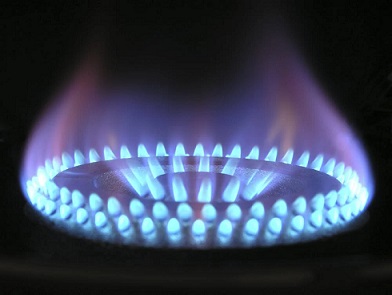Natural gas prices were volatile as traders compared strong LNG imports across Europe against potential supply disruptions caused by Russia’s escalation of the conflict with Ukraine.
Dutch front-month futures rose by up to 3.4%, after earlier falling to the lowest level since July 1st.
After pummeling Kiev and other Ukrainian cities with missile strikes, Russian President Vladimir Putin promised further attacks would be forthcoming.
Tom Marzec-Manser, head of gas analytics at ICIS in London noted that the attacks, “could be playing a part in higher risk premium being added back in, in case of pipeline collateral damage.”
Russian gas continues to flow into the European market through a single cross-border point, however the pipeline in question travels through Ukraine, meaning the recent escalation raises the possibility that link could be damaged and shut down. In May the only other link through Ukraine was shut down by the conflict.
On the other side, Europe’s gas reserves are filled to a higher capacity than normal going into the winter, and this could serve as a buffer in the event to further disruptions. In addition, Blomberg data shows LNG flowing to Northwest Europe at the highest seasonal levels seen since at least 2016 and a report by Maxar predicts the majority of the continent will see temperatures higher than previously forecast, further easing demand.
On the other hand, with Nord Stream 1 fully out of commission due to sabotage, half of Nord Stream 2 inoperable, and the political resistance to opening Nord Stream 2’s “B” line to facilitate deliveries to Germany, ship-borne transports will have to make up the volumes which used to be effortlessly delivered by pipeline.
For now the market is waiting to see how the supplies that have been lost will be made up by officials. Governments are presently implementing a mix of conservation measures and newly negotiated supplies from new suppliers, with some looking at using debt-financing to subsidize energy expenditures.
In Germany, an advisory group recommended that the government spend nearly 100 billion euros through 2024 to subsidize gas consumption by both residential consumers and industry. Officials are reviewing the proposal, and a decision will be issued in the coming weeks.
The EU is looking to see if it can place a cap on prices, perhaps by negotiating with reliable suppliers to deliver fuel within a range of, “decent prices.” Given the use of gas to supply both heat and electricity, rises in prices hit consumers doubly hard, making any reduction in costs of gas doubly effective.
Dutch front-month futures were up 0.8%, to 157.50 euros per megawatt-hour as of 2:38 PM in Amsterdam. The British equivalent was up 3.1%.
UK day-ahead prices were up 12%. Inspired Energy noted in a report that the delayed start of one of the reactors at the Hartlepool nuclear plant, combined with lower than usual temperatures and diminished wind-power output were all driving prices upward.

